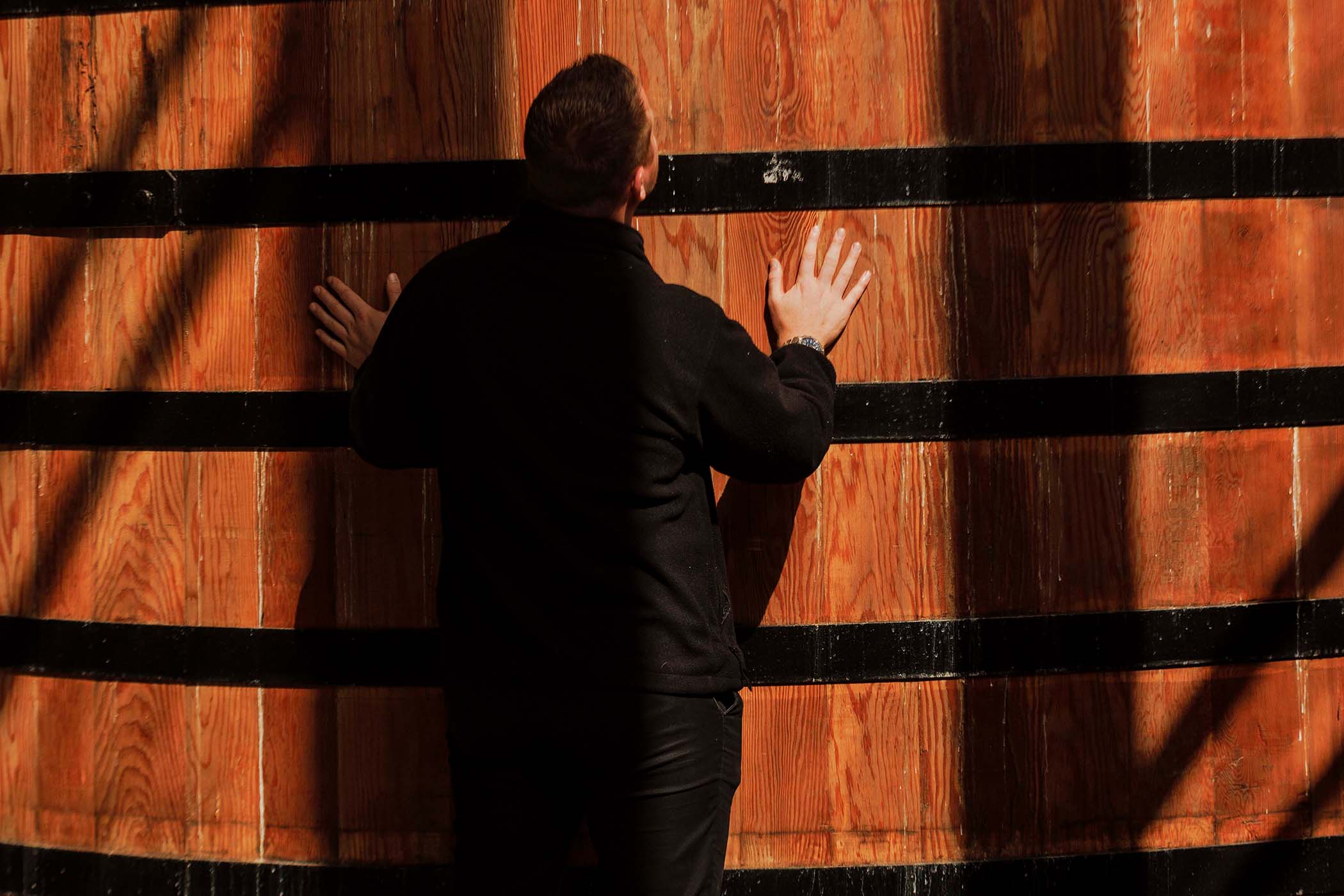Photographs Robert Ormerod
In 1988, while Gordon McIntosh was clearing out his childhood home in Edinburgh after his father died, he found a collection of whisky bottles in the cupboard under the stairs. Among them was an unusually shaped triangular bottle with a plain beige label that read “Port Ellen 12 Year Old Malt Whisky” in black ink. McIntosh considered opening it – why not have a drink to his father? – but instead he took it home to Glasgow, where he stored it in the cupboard under his own staircase, and forgot all about it.
“That bottle never really stood out as something special until a few months ago,” McIntosh told a reporter from the Daily Record in 2022. And yet, when a friend who ran whisky-tasting tours mentioned that Port Ellen was in very high demand, McIntosh had the bottle valued, and the result shocked him. “It was a complete surprise to find out how rare it was,” he told the paper.
McIntosh considered keeping the bottle. But soon he discovered it was one of just 40 poured to commemorate the late Queen’s visit to the Port Ellen distillery in 1980, on the windswept Inner Hebridean island of Islay, and that it was far too valuable to drink. In June 2022, he put the bottle up for auction and there a remarkable thing happened: 10 people – from the US, Hong Kong and the UK – entered a fierce bidding war. The hammer came down at £100,000, making it the most expensive bottle of 12-year-old single malt ever sold. The winning bidder was an unnamed collector from Hong Kong.
McIntosh doesn’t know exactly how his family came to own the bottle. His father had worked in the whisky business, and he presumed it had been given to him as a gift, in 1985.
Then, Port Ellen whisky was neither very well known nor particularly well thought of. There were better, more famous distilleries nearby: Laphroaig and Talisker. Hardly any Port Ellen whisky was considered of the quality necessary to be bottled and sold as single malt, and as a result very little of it was allowed to mature. (To be legally considered whisky, the spirit must sit in oak barrels for at least three years and one day, during which time it will take on colour and flavour from the wood.) Most of what Port Ellen produced was poured into casks to be used in blends of Johnnie Walker. But the whisky that was saved from the blends and instead poured as single malts for the Queen’s commemorative bottles or sold as other “special releases”, have made Port Ellen one of the most famous distilleries in the world.
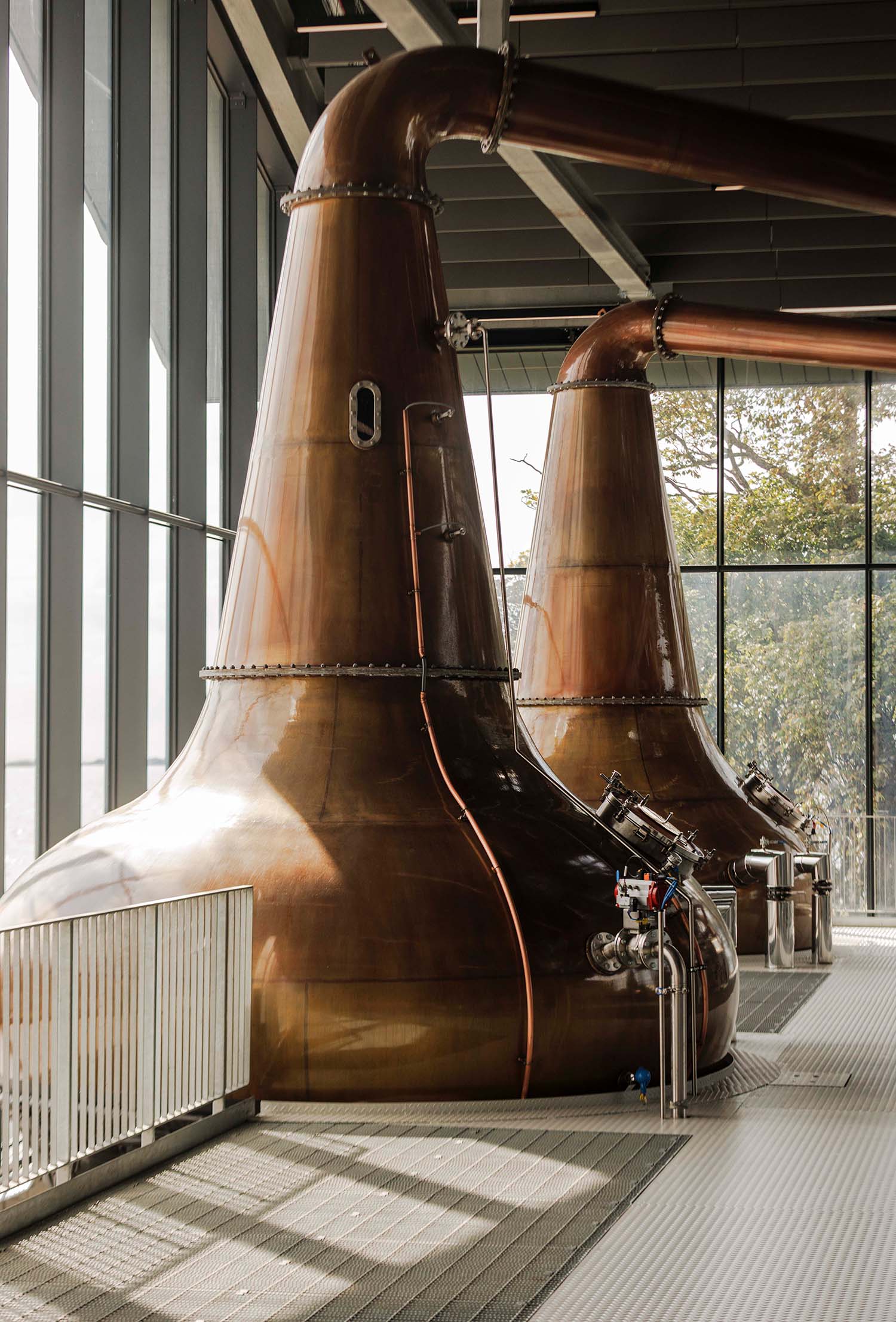
Horns of plenty: the vast copper stills at Port Ellen Distillery
It is not easy to get to Islay. I took a five-hour train from London to Glasgow, then a cab to the city’s airport and boarded Logan Air flight LM0427 for the 45-minute trip to Islay’s former RAF airport. I had come to tour the revamped Port Ellen distillery – to better understand how a little-known whisky became, decades later, a phenomenon. And yet everyone I met had the same first story to tell, one about the island’s airport. How King Charles crashed the RAF jet he was attempting to land here in 1994. How no one was injured, but the plane overshot the runway. How the jet was very badly damaged. And how, shortly afterwards, the King retired from flying.
It was a 10-minute drive from the airport to the distillery, and on it we passed a total of seven cars. The drivers of each of them greeted us with a raised open palm – “the Islay wave”.
At the distillery, a tour began not with whisky tasting but with tea, an attempt to warm our palates so we could better understand the subtle smokiness of lapsang souchong, the leaves of which are smoke-dried over pinewood. In much the same way as, during the whisky-making process, malted barley is dried over the island’s peat, giving a similar smoky flavour.
The entire process of making whisky – malting, mashing, fermentation, distillation – happens under the control of one person from a bank of computers set up near the towering copper stills – the vast copper kettles used to separate the alcohol from the beer-like wash at the end of the whisky making process.
Despite its whisky being popular (and expensive) today, the original Port Ellen distillery stopped producing the spirit at 10.14am on 28 March 1983, when the last cask was filled and the gates to the distillery were closed.
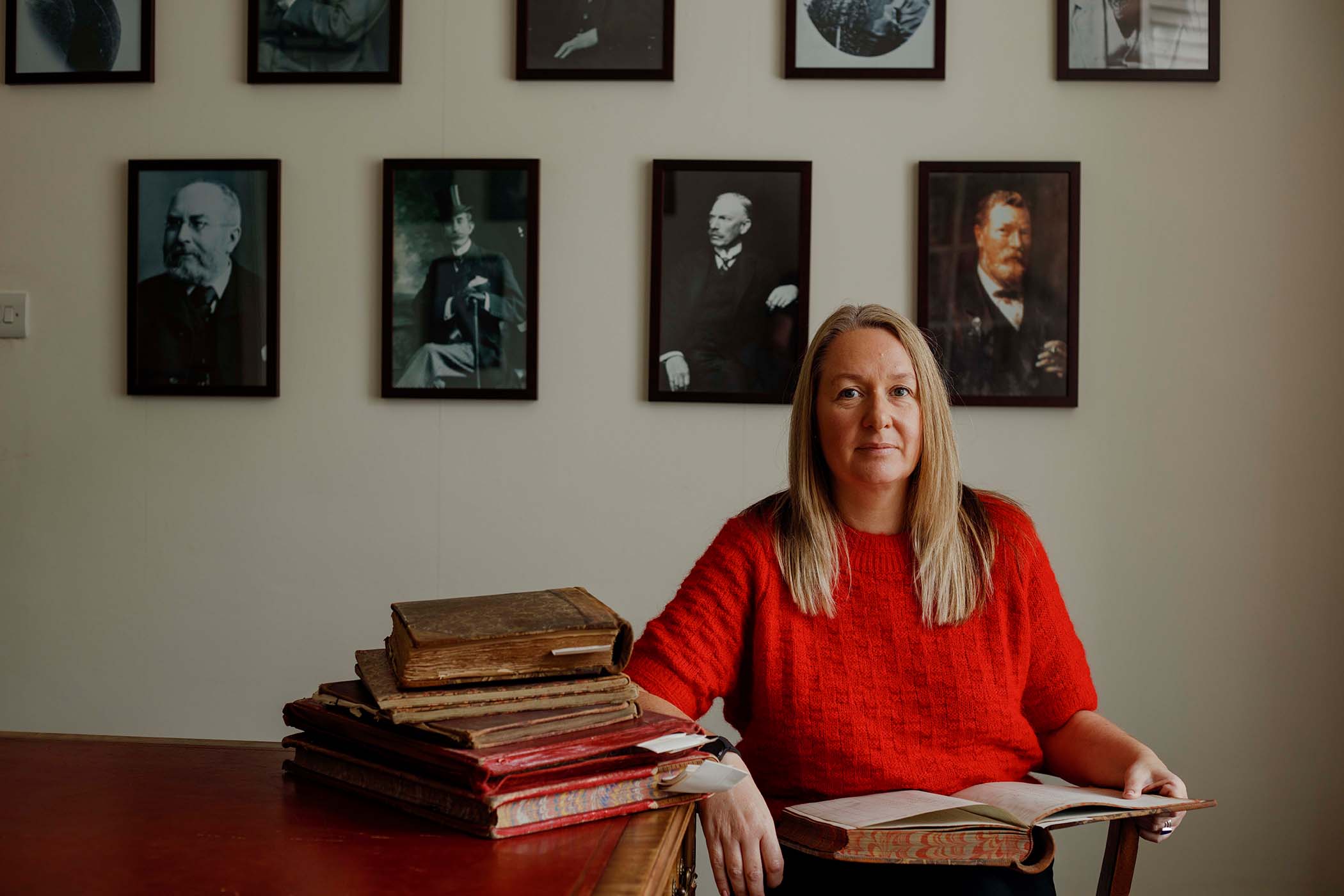
A taste for research: Joanne McKerchar, Diageo’s senior archivist
“I found the ledger for those last casks,” Ali McDonald, the distillery’s gregarious new manager, told me on the tour. “I read that old beautiful handwriting and wondered what they must have been thinking when they put that final full-stop in the ledger.”
The distillery, which stands on the south coast of the island, was one of more than 30 Scotch-whisky distilleries closed during the 1980s “whisky loch” crisis. The industry had been hit by a triple whammy of bad news: the economy was in the midst of a severe recession; drinkers (particularly younger ones) were switching away from whisky to lighter spirits; and overproduction meant there was a glut of whisky stored in warehouses across Scotland. In fact, there was said to be so much excess whisky that there was enough to fill an entire Scottish loch, hence “the whisky loch”. Port Ellen was destined to become just one of the many “ghost distilleries,” never to produce another dram.
In response, whisky makers across the country cut back on production and closed dozens of distilleries, including some of the most well-known names: Convalmore, Brora and Glen Lochy. All 17 of Port Ellen’s employees lost their jobs, though some, including Iain “Pinky” McArthur, the distillery’s warehouse manager, who first started working at the plant when he was 15, secured jobs at the nearby Lagavulin distillery.
The original stills – big copper kettles in which the whisky is made and which McArthur describes as being like “really big off-shape onions” – were left abandoned inside the distillery for a decade. Then, in 1993, they were taken outside, broken up, and loaded on to the ferry to the mainland. That, it was believed, really was the end of Port Ellen. Without the stills, the same whisky could never be produced again.
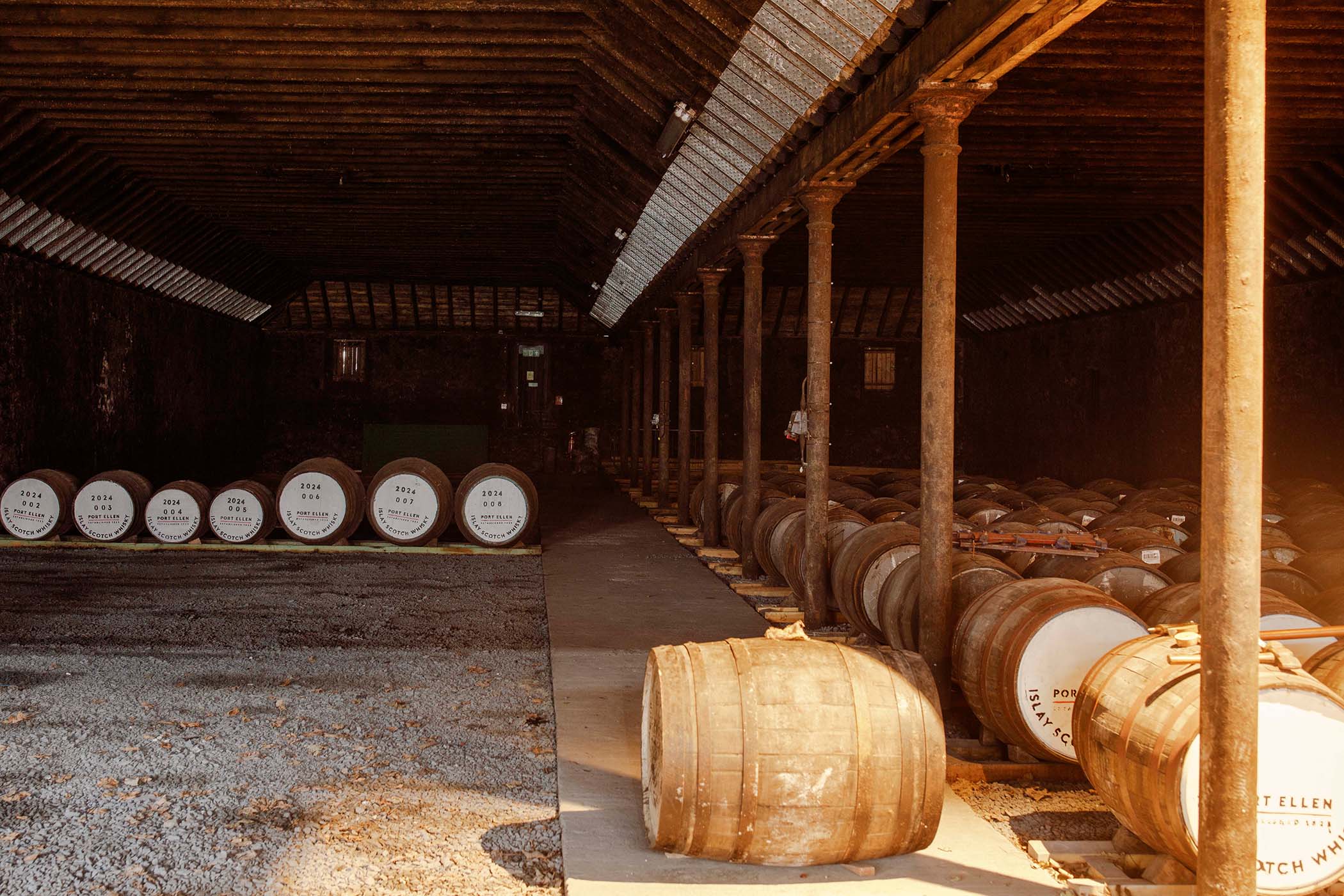
Roll out the barrel: whisky cask inside the distillery warehouse
While the distillery was mothballed and mostly forgotten about, a few handfuls of Port Ellen single-malt casks filled in the last few years of its operation were quietly maturing around Scotland.
“Those casks sat at the back of dusty old warehouses, where people had forgotten all about them,” said McDonald, who is 31 and comes from Lochgilphead, a two-hour ferry ride from Islay. “Then, 20 to 30 years later, after that liquid had had its full maturation, people began to open those old casks – casks never destined for greatness – and found this amazing, amazing Port Ellen. People were stunned at how good it was – and the prices have been rising ever since.”
The financial success of those old Port Ellen whiskies didn’t go unnoticed in the boardroom of its owner, the giant British drinks multinational Diageo. Bosses rued the day their predecessors decided to close the distillery: how could they own a distillery that produced some of the most expensive whisky in the world and have no way of making more?
Sir Ivan Menezes, Diageo’s former chief executive, had the idea of reopening Port Ellen in a bid to recreate the unique taste of the early 1980s vintages. But few people in the company’s London headquarters expected his pipe dream to become a reality.
In December 2017, Menezes shocked most of his colleagues – and the whisky world – with the news that Diageo would spend £35m reopening both Port Ellen and Brora, another “ghost” distillery in the eastern Highlands.
“Nobody saw it coming,” said Joanne McKerchar, Diageo’s senior archivist, who I met in the company’s vast archives in Menstrie, near Stirling on the Scottish mainland. Kerchar would soon become central to a small team, codenamed Project Stafford, tasked with creating a modern version of the old distillery. The new distillery would have to be an exact replica of the old, so that it could produce new whiskies that would have a similar flavour profile to the extremely expensive originals.
“I was completely blindsided,” McKerchar told me. “I heard the news on the radio. I thought, ‘Oh, that’s what I’m going to be doing with the next two years of my life’.”
It turned out to be the next seven. In order to recreate whiskies as good as those early Port Ellens, the team had to establish a new distillery on a site as close to the old one as possible, as the smallest variables in the complex whisky-making process can have a huge impact on the taste. “But there was none of the original distillery left, so we couldn’t go and look at the footprint and figure out how it was put together.”
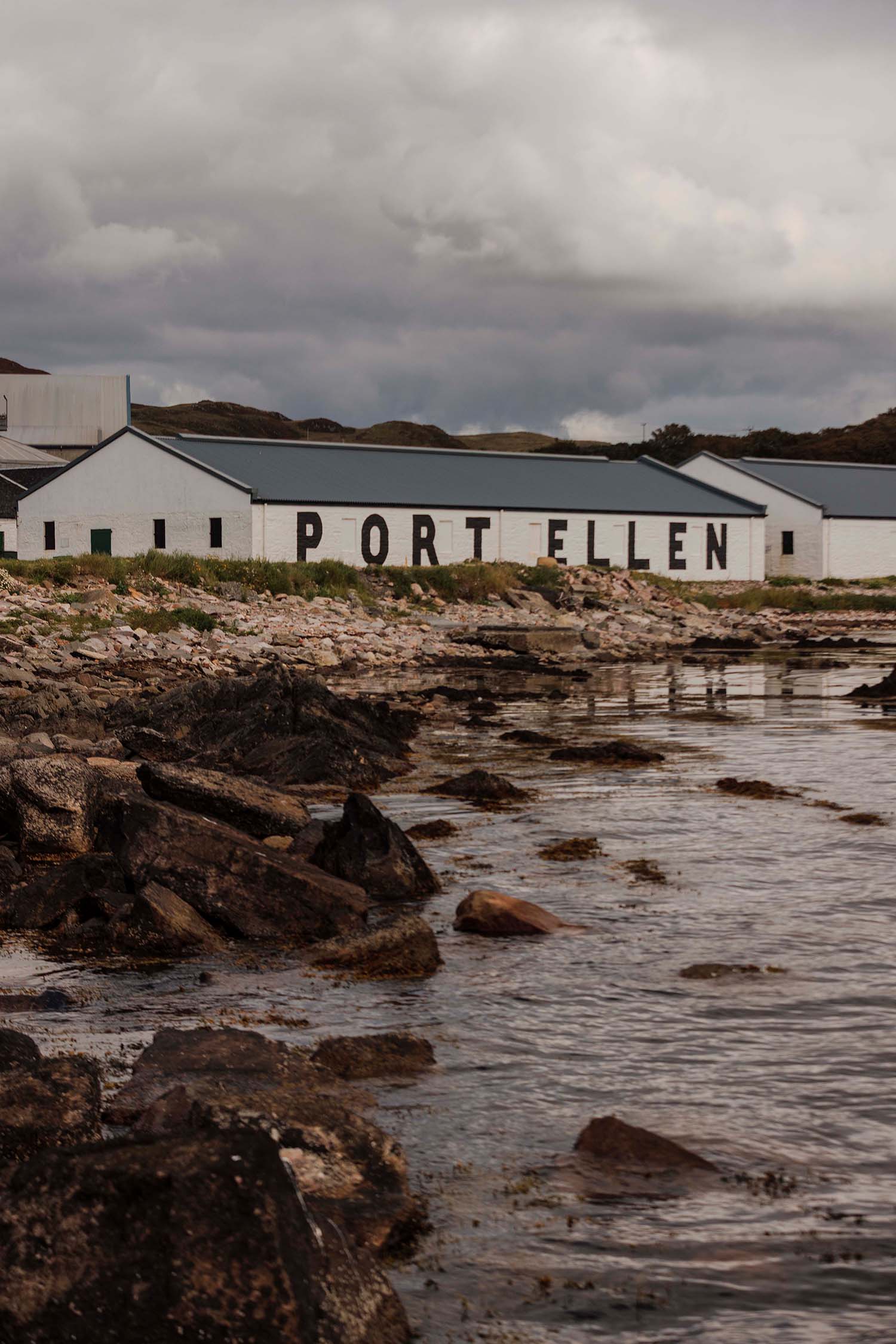
Still life: the Port of Ellon Distillery, as revived on the island of Islay
They had tried to track down the original stills. “We found that they had been broken down and flown to India, but that’s where we lose the traceability of them,” McDonald said. “They might have been cut up further and put in production over multiple sites. But there’s a bit of me – actually a lot of me – that hopes they were put back together and are still producing somewhere.”
Instead, McKerchar turned to Diageo’s archive to hunt for clues. “The first thing I did was go down into our stores and pull out everything I had on Port Ellen,” she told me. “It was the first time anyone had looked at some of these files in 40 years. Port Ellen hadn’t been a distillery we’d really thought about until then.”
Inside one of the first boxes she opened, McKerchar found original drawings and photographs of the stills installed at Port Ellen in 1967.
“It was like Christmas,” said McKerchar, whose father and grandfather also worked for distillers. “The boxes had never been opened in the 15 years I’d worked there. It was really exciting.” From the original drawings, the team discovered the name of the coppersmith – Abercrombie, in Alloa – who made the original stills, and commissioned them to make exact replicas.
McDonald originally came to Islay in 2014 on a six-month contract to work at another distillery on the island, but then, “I met my partner, whose family is from Islay, and I fell for her,” he told me. “And I fell for whisky and I just never left. Islay has a very weird way of holding on to you. They call it ‘Islay time’,” he went on. “When you come to Islay, time just seems to slow down, which from a romantic perspective is amazing. Everything is very relaxed, and there’s something beautiful about being able to just say hello to everyone as you pass them.
“But on the other side of the coin, if you work in a relatively fast-paced industry, trying to get things done can be difficult.”
The perils of Islay time meant that Port Ellen reopened four years behind schedule, in March 2024, six months after Menezes died. McDonald built his own team to run the distillery, with five senior operators – John, Michal, JJ, Dave and Mhairi – working in shifts. John MacDonald, who was on shift when I visited, monitors the whole production process from a booth in the centre of the distillery hall. His father, Willie MacDonald, had worked as a joiner in the original distillery.
“Willie unfortunately passed away recently,” Ali McDonald told me. “So he lived to see his son in the job, and to see his son commission the site with the team, but unfortunately he never got to see the new Port Ellen.”
The first casks of the new Port Ellen were filled on Thursday 21 March 2024, two days after the distillery reopened. “Cask one I filled,” McDonald said. “I’ll always remember, because Thursday night is my badminton night. I had to get the cast filled, then swap my shirt and get my shorts and trainers on.”
That cask and another seven that were filled that first night are now sitting in the distillery’s warehouse, alongside a single (and mostly empty) cask of the original 1979 Port Ellen containing liquid that would cost more than £100 per dram – if you were allowed to buy it. (It can only be drunk by people who sign up for an “Atlas of Smoke” tour of the new distillery, at a cost of £900 per person).
I was lucky enough to enjoy a dram of it when I visited. There was complexity in the palate, but it was also smooth, light and subtle. In its official “tasting notes” the 1979 Port Ellen is described as having a “delicate bouquet of sweet orange blossoms, intertwined with a subtle medicinal astringency”. While on the palate it evokes, “Vibrant ripe tropical fruits favouring mango and papaya, accentuated by a gentle wisp of smoke and a saline hint of maritime air.”
John MacDonald, in his production booth, is obsessed with making sure that everything is just right and that the new liquid will be as good as that distilled back in 1979. “But no one will know until we put that valinch in and taste some,” he said, referring to the long copper pipettes used to extract small amounts of liquid from the barrels for sampling.
This won’t happen for at least another decade, to allow the liquid in the barrel to fully mature – most high-quality single malts are aged for at least 12 years, and sometimes up to 40. MacDonald is preparing for the long wait. “We’ve got ideas of when we want the liquid to be ready, but there is still that wee bit of ‘who knows’, because the reality of it is that we’re guessing,” he said.
While Diageo spent ultimately invested £185m on reopening Port Ellen and the other distillery, Brora, alongside building a Scotch-whisky visitor’s centre in Edinburgh, the company will need to wait to understand what return it might make from its investments.
Until then, MacDonald will place his faith in the science behind the whisky-making process.
“We do analysis on every spirit run – checking for phenols, for smoky levels, for fruitiness, for texture and alcohol percentage,” he said. “Every element we can control is exactly how we want it to be.
“But,” he continued, “we won’t know if it’s worked until a team of master blenders puts that valinch into the cask, and we nose it, and taste it. There’s still that romance left in it. It’s up to the cask to finish it now.”
